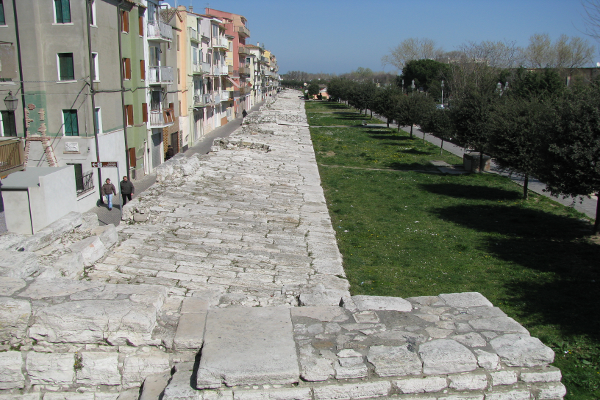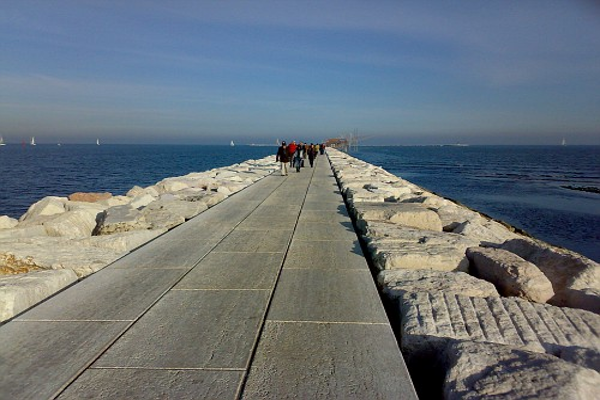
THE MURAZZI
Murazzi are massive Istrian stone walls built since the end of 18th century by the Republic of Venice in order to defend the lagoon inhabited areas against sea erosion. They are divided in three sections: the first one is situated on Lido Island, the second one on Pellestrina Island up to Ca’ Roman. The third section, on Sottomarina coast, between San Felice Stronghold and the city centre, for a length of 1200 metres.
The War of Chioggia caused the total destruction of Sottomarina, which became an uninhabited land, without any protection from the sea and subject to numerous floods. Only in the 17th century the rebirth of the town started, thanks to the building of the Murazzi. The walls in San Felice Road were more than 5-kilometre-long and 300 metre wide. They were made of squared stones, in particular Istrian stones and they were erected on the stilts coasts of Pellestrina and Sottomarina.
At first it appeared to be an impossible construction due to the greatness of the work and the lack of appropriate equipment, in fact the building took thirty-eight years, ending in 1782. Legend has it that a memorial stone was placed since then, saying: “Ausu romano, aere Veneto” (Latin words for “with Roman dare, with Venetian money”). This inscription is still visible by taking the Chioggia-Pellestrina line boat. The Murazzi ended their purpose between the end of 19th and the beginning of 20th century, when the sea started receding, leaving behind an unexpected sandy shore, so they became a symbolic dividing line between the “ancient” and the “recent” Sottomarina.
Nowadays the Murazzi of Sottomarina are about one kilometre far from the sea, this allowed the development of seaside tourism on a large scale. The Murazzi connect the whole Venetian coast, especially the outside islands, just leaving three harbour entrances thanks to which the lagoon’s water does not die.

THE DAM
A remarkable work finished during the fascist period is the dam of Sottomarina. With the dam of Ca’ Roman, built some years before, it completed the entrance of Chioggia harbour.
The beginning of this embankment dates back after the First World War. As the Murazzi, the construction of the dam was planned to be made of Istrian stones. In addition to the completion of the harbour, it permitted a further coastal enlargement. The inauguration of the embankment took place on April 28th in 1935, in the presence of the Duke of Aosta.
The dam was immediately chosen by the citizens as a favourite walking location, especially for Sottomarina inhabitants, to such an extent that many people call it the “square of Sottomarina”.


